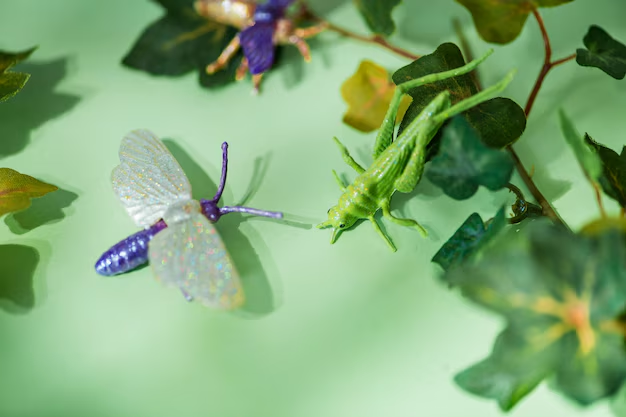1. Introduction: New Lanternfly Species Discovered in Vietnam and Cambodia
In recent years, researchers have discovered new lanternfly species in Vietnam and Cambodia, adding to the rich biodiversity of Southeast Asia. This exciting discovery highlights the ongoing exploration of the region’s insect population and the importance of understanding how these species impact local ecosystems. The new lanternfly species found in these countries may have unique traits that set them apart from others, making them a significant subject of study for entomologists.
2. What Are Lanternflies? Understanding the Insect
2.1 Defining Lanternflies: Key Characteristics
Lanternflies are large, brightly colored insects known for their striking appearance and distinctive behavior. They belong to the family Fulgoridae and are primarily found in tropical and subtropical regions. These insects are often characterized by their long wings, bright colors, and a unique “lantern” that some species are known to have on their heads. Their vibrant appearance makes them a popular subject for scientific research and observation.
2.2 The Role of Lanternflies in Ecosystems
Lanternflies play an important role in their ecosystems, particularly in their relationships with plants. As sap-sucking insects, they feed on the sap of various plants, which can affect plant health and growth. Understanding the ecological impact of lanternflies is crucial, as some species can become invasive, disrupting local ecosystems. The newly discovered species in Vietnam and Cambodia could provide insight into how these insects interact with their environments and potentially affect local plant species.
3. Discovery of New Lanternfly Species in Vietnam and Cambodia
3.1 The Process of Discovery: How Researchers Found the New Species
The new lanternfly species in Vietnam and Cambodia were discovered during field research conducted by entomologists and wildlife conservationists. These species were found in various regions, including forests and agricultural areas, where they were observed feeding on local vegetation. The discovery was made after extensive studies of the lanternfly population in the area, including collecting specimens for further analysis and comparison with known species.
3.2 Unique Features of the New Lanternfly Species
The new species of lanternflies found in Vietnam and Cambodia exhibit distinctive traits that set them apart from their relatives. These features could include variations in their size, color patterns, and markings. Some species have developed specific adaptations to their environments, making them even more intriguing to scientists. Understanding these differences could provide valuable information about the adaptability and evolution of lanternflies in different climates and ecosystems.
4. The Ecological Significance of the New Lanternfly Species
4.1 Potential Impact on Local Flora
The introduction of new lanternfly species in Vietnam and Cambodia raises questions about their potential impact on local plant life. As sap-feeding insects, lanternflies can affect the health of plants they feed on. Researchers are closely monitoring the species to determine if their presence will lead to any significant damage to crops or native plant species. Their feeding habits may disrupt the growth of plants that are important to the local economy and ecosystem.
4.2 Role in Biodiversity and Conservation Efforts
Despite potential negative impacts, the new species of lanternflies also contribute to biodiversity in the region. Understanding how these species interact with their surroundings can help conservationists create strategies to preserve both the insects and the ecosystems they inhabit. Additionally, the discovery of these species underscores the importance of preserving natural habitats in Vietnam and Cambodia to ensure the survival of unique organisms.
5. Challenges of Studying Lanternflies and Other Insects
5.1 Difficulty in Identifying and Classifying New Species
Identifying and classifying new species of insects can be a challenging process due to the sheer diversity of species in tropical regions. Lanternflies, with their wide range of appearances and behaviors, require careful analysis and comparison to ensure they are correctly categorized. Genetic testing, behavioral observations, and physical characteristics are all part of the process, which can be time-consuming and complex.
5.2 The Importance of Continued Research
Continued research is essential to fully understand the behavior, distribution, and impact of the new lanternfly species in Vietnam and Cambodia. By studying these insects in more detail, researchers can gain insights into their life cycles, reproductive habits, and environmental requirements. This information will be crucial in determining how these species might affect local ecosystems and whether any conservation efforts are needed.
6. Conclusion: The Future of Lanternfly Research in Southeast Asia
The discovery of new lanternfly species in Vietnam and Cambodia highlights the region’s ecological richness and the need for ongoing research. While the presence of these new species could present challenges to local plant life, they also offer valuable opportunities for scientists to learn more about insect behavior and biodiversity. As research continues, understanding how these lanternfly species interact with their environment will be essential for balancing conservation efforts and managing any potential ecological impacts.

